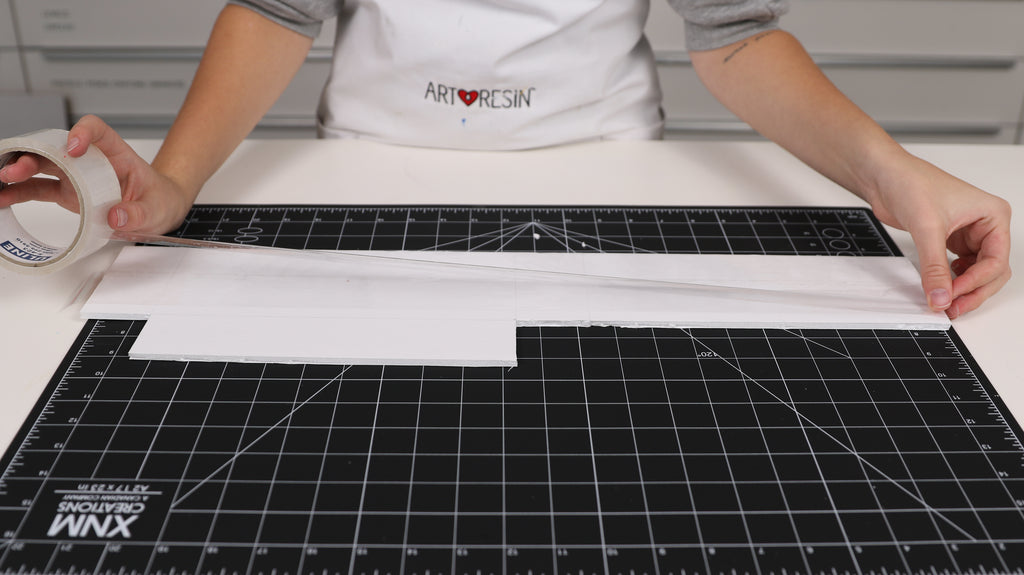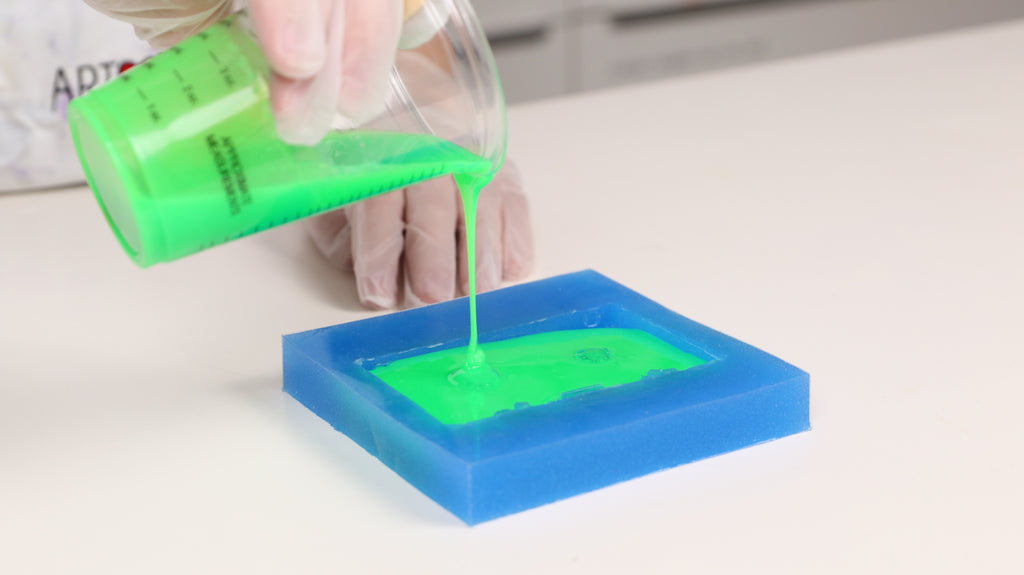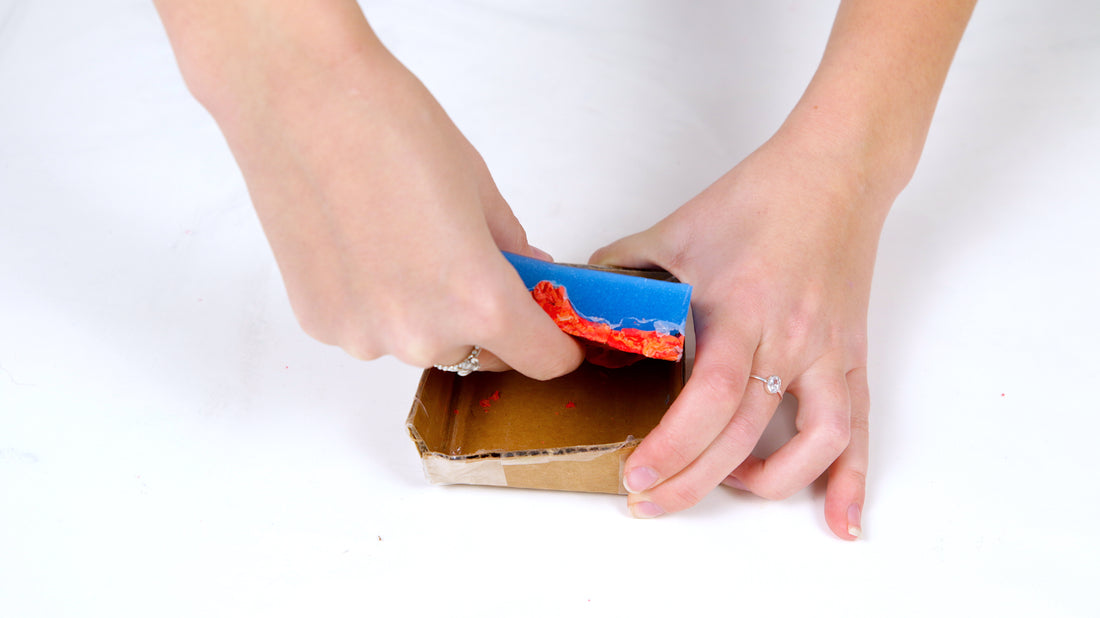There is an endless number of things you can duplicate with Mold Making Material and 2 methods that work best depending on the object you're copying.
In this blog, we will examine the One-Part Method vs. the Two-Part Method.

ONE-PART MOLD METHOD
The one-part mold is the simplest method, but only works for certain shapes or objects. This is also the quickest method because the mixture is poured all at once around an object in one sitting.

The objects that are ideal for this method are ones with a flat side or base. This flat portion of your object allows you to place or glue the object to the floor of your surrounding box and pour the Mold Making Material all at once.

Our King Tut figurine featured here was an object ideal for a one-part mold because it was a simple shape with a flat bottom. When the silicone cures, the mold can be taken out of the box, and the object can be pulled out of the mold.
Here's how it works:
First, you will need to find a box slightly larger than your object. We like to keep it easy and use pre-made boxes such as milk cartons, plastic containers and yogurt cups.

You can also make your own frame to surround your object from cardboard, wood or foam core. Remember, the more space around the object, the thicker—and therefore stronger—your mold will be.

If you are making your own frame out of cardboard or foam core, it is important to seal the inside with tape so the box becomes waterproof. We use packing tape to seal our boxes and to cover the surface of the box so the mold will easily pull away from it later.

In the example shown, we are using a milk carton to house the King Tut figurine. We cut the milk carton about an inch taller than King Tut and used the bottom half. Depending on the weight of your object, you could choose to glue it to the bottom of the box.

Now it’s time for the Mold Making Material. You’ll want to mix equal measurements of Part A and Part B until the color is consistent.

The 2 parts of the Mold Making Material kit are actually 2 different colors (white and dark blue) so you'll know when the mixture is thoroughly mixed when the color becomes one consistent medium blue hue.

Next, pour the mixture into your container and over your object.

Then, sit back and let the mold cure; 3-4 hours at room temperature will do the trick.

Once time has passed, you can poke the top of the silicone to make sure that it is not sticky anymore before removing it from the box.

Cut the box open and pull the whole mold out before removing the object.

Remove your object from the mold by carefully wiggling it out.

Congratulations, your mold is complete and you are now ready to make exact replicas of your object.

You can use many different substances to fill the mold, such as cement, plaster, polyurethane, soap, clay, polymer clay, play dough and wax, but we recommend ArtResin epoxy resin in combination with our line of ResinTints.
💡 TIP: You can also use Mold Making Material for food safe molds to create personalized shapes out of chocolate, candy, ice, butter and more! Just remember, molds made for use with food should ONLY be used for food. For more information, see our blog Make Your Own Food Safe Silicone Molds.

ArtResin is another simple to use product that works comfortably well with Mold Making Material.

Follow this link the learn more about ArtResin and its world of creativity!!
TWO-PART MOLD METHOD
For a more complicated object, or an object that cannot be easily glued down in your box, a Two-Part Mold may be beneficial.
A Two-Part Mold is made through two separate pours, using plasticine in the bottom half of your mold to hold the object in place. An example of an object that would be better suited for a Two-Part Mold is a baseball. A baseball has no flat sides and won't stay sitting in one spot without help.

Here's how it works:
In the following example, we will create a Two-Part Mold for a starfish, another object without a flat side.

First we measure and cut a cardboard box big enough to fit the starfish.
We then place and spread plasticine into the bottom of the box so that the whole floor is covered.

Next, grab your object (starfish) and press it into the plasticine so it is halfway covered. Be careful if your object is delicate.

Now it’s time for the Mold Making Material. You’ll want to mix equal measurements of Part A and Part B until the color is consistent.

The first pour of Mold Making Material should cover the half of your object protruding from the plasticine.

Once the silicone has cured (approximately 3-4 hours after mixing), cut and remove the plasticine and mold from the box. Try not to damage the box as you will be using it again to pour the second part.

Remove all of the plasticine, cleaning off any little bits that may be clinging to the object or mold.

Now place the mold back into the box with the cured Mold Making Material on the bottom. Now is the time to add a straw or something similar to your object in order to create a pouring spout. In this case, we simply reused a little bit of the plasticine in order to create the spout.

In a separate project, we super-glued a straw upright on the top of a baseball to act as our pouring spout.

*Side note - a pouring spout is a void in the cured Mold Making Material. This void, or hole, allows you to pour in the substance you intend to use to make your duplicate objects. In our examples, we use tinted ArtResin.

The second pour of Mold Making Material can now be measured, mixed and poured over the rest of the object.

Simply wait 3 hours and the mold will have cured. It can now be removed from the box and your object can be removed from the mold.

Cutting a mold to remove an object should be done in as few cuts as possible. We typically cut from the pouring spout and down the middle of our mold, but it does depend on the shape of the object. Cut the mold in small increments until you are able to pry the mold open to remove the object.

You can also remove the small piece of plasticine or straw as it is no longer necessary. You should now have a small hole to use to fill your silicone mold.
Your Two-Part Mold is complete and you can now make exact replicas of your object.

You can use many different substances to fill the mold such as polyurethane and wax but we recommend ArtResin in combination with our line of ResinTints.

One thing to remember when using a Two-Part Mold is to carefully, and as precisely as possible, tape the mold closed before filling it. This will ensure a proper duplicate with little to no lines from the separation in the mold.

If you do get lines or extra bits on you copied object, simply use an X-acto knife or Dremel to trim them off.
From there, have fun and create as many replicas as your heart desires.
...Do you copy? ;)
Learn more about the mold making material and read our guides about mold making:
- How to make a resin box mold
- How to make food safe silicone molds
- How to use a mold
- Shiny vs matte silicone molds
ArtResin: The Original Epoxy For Resin Art.


